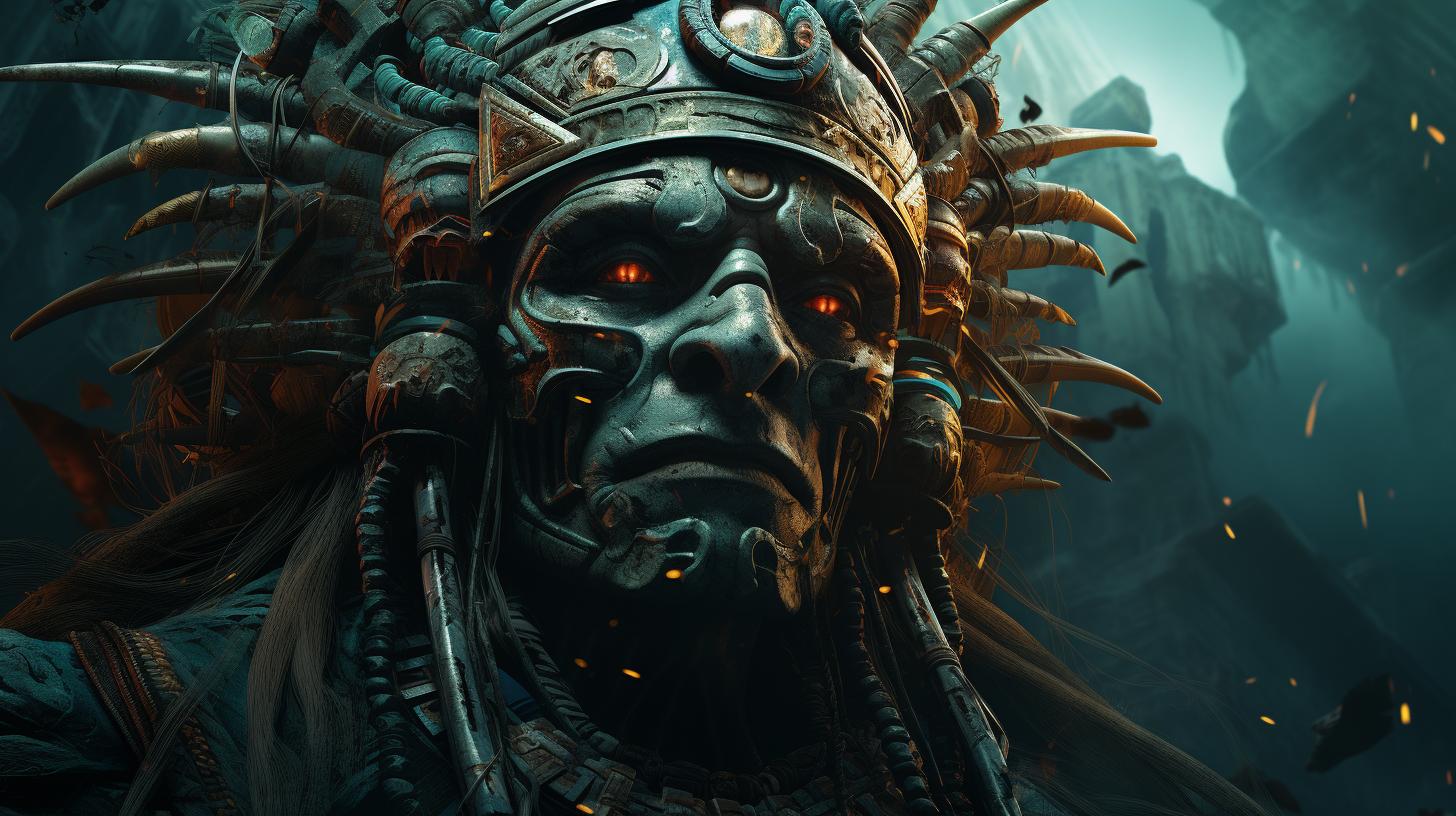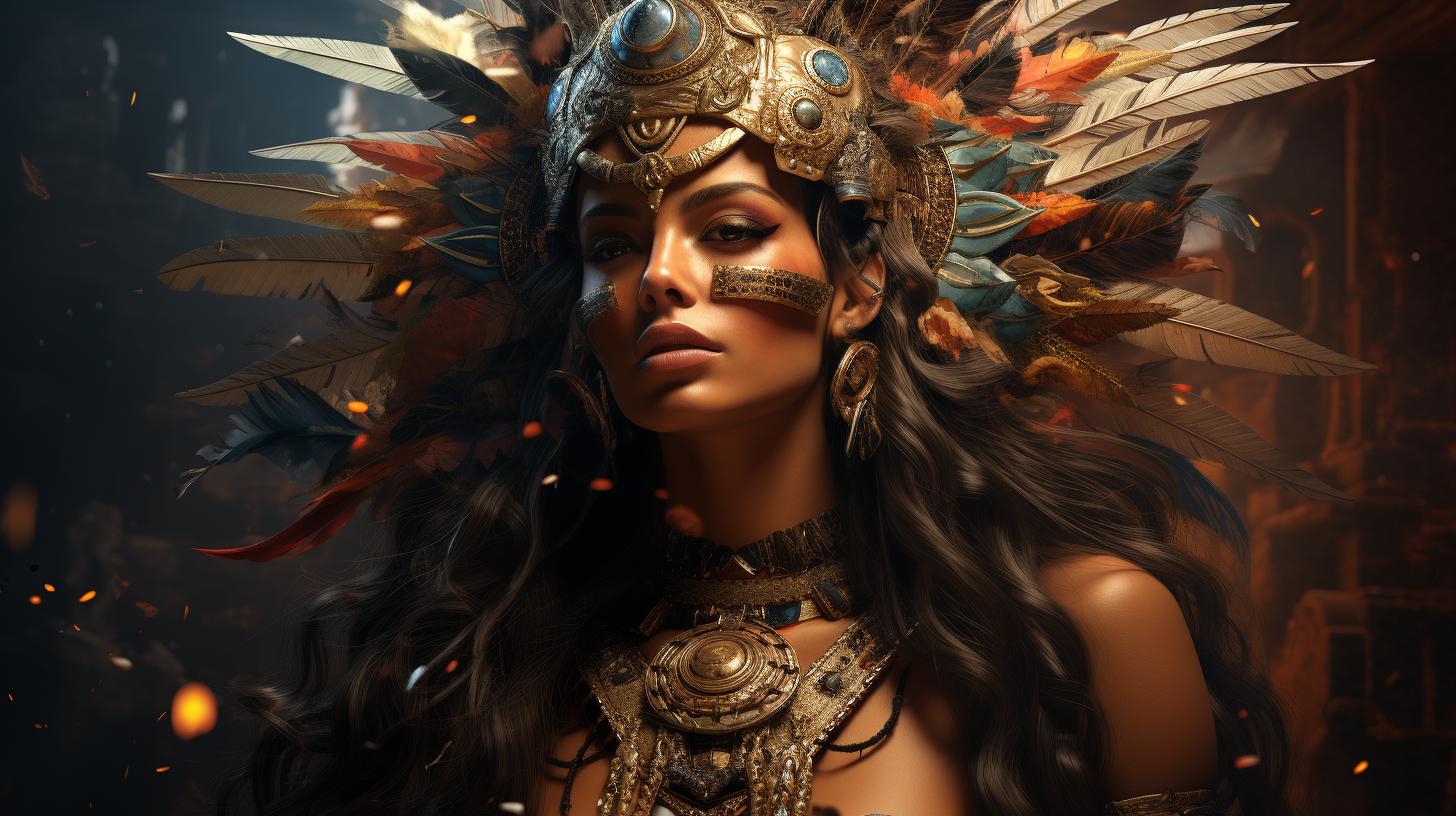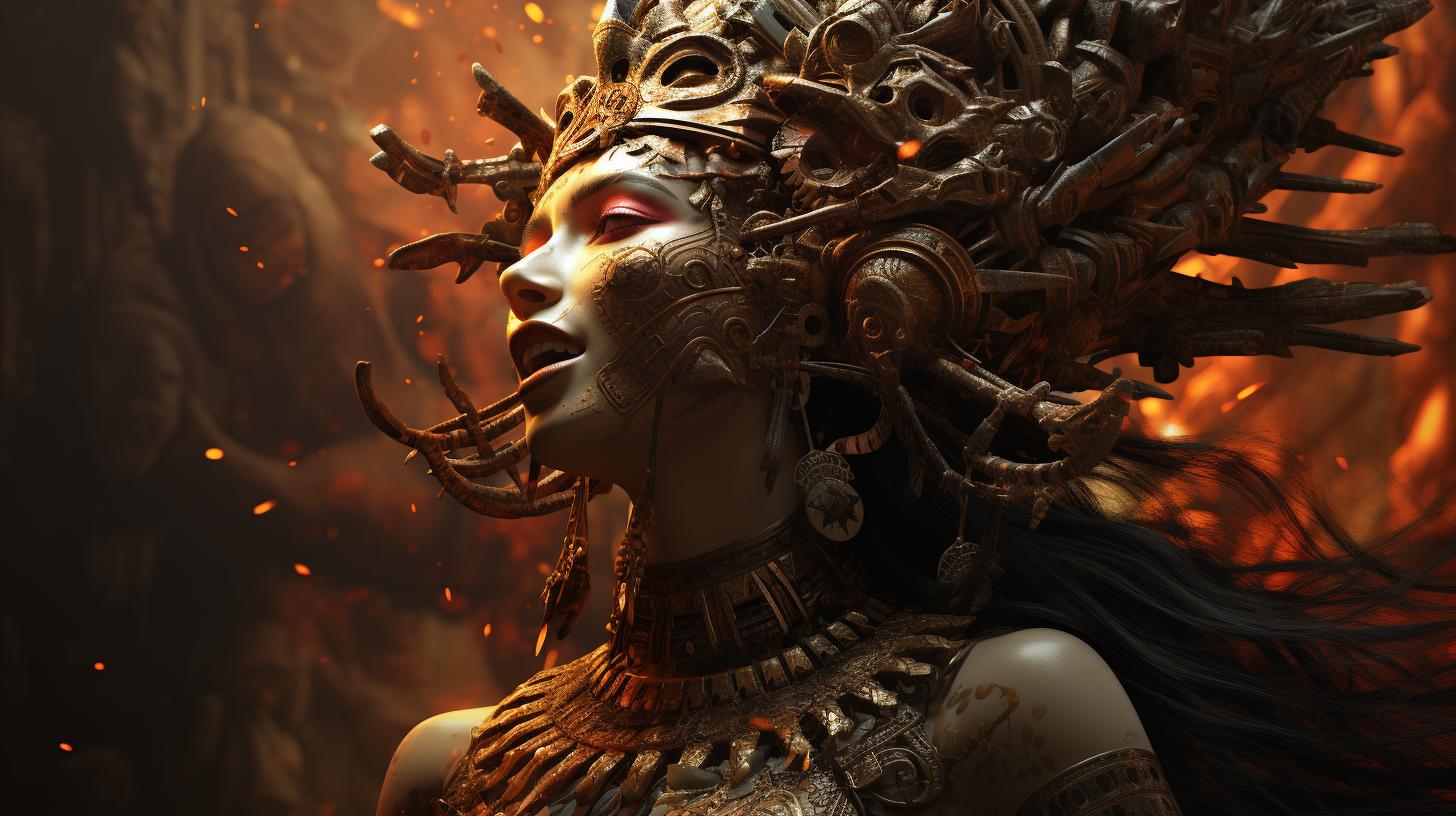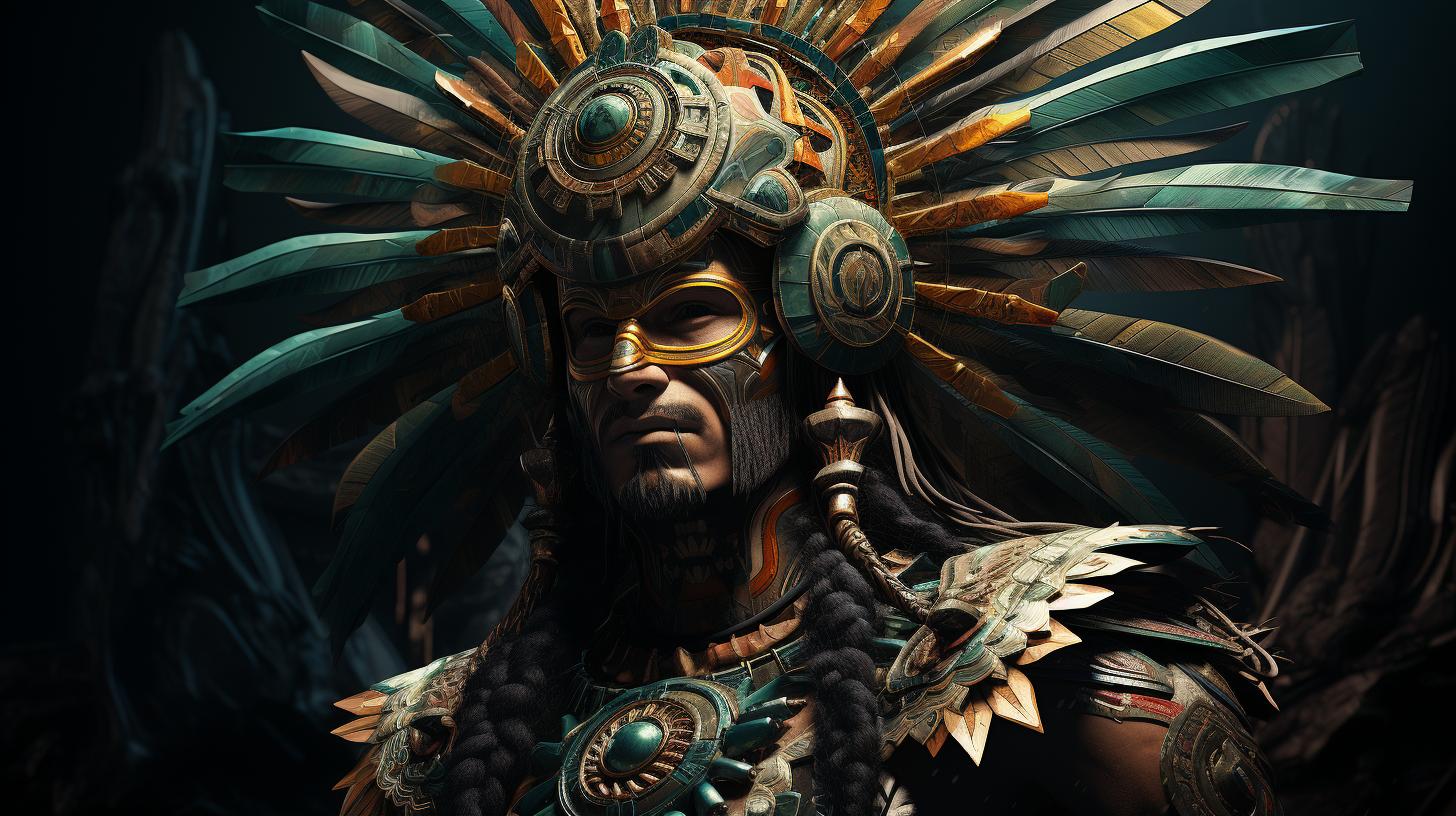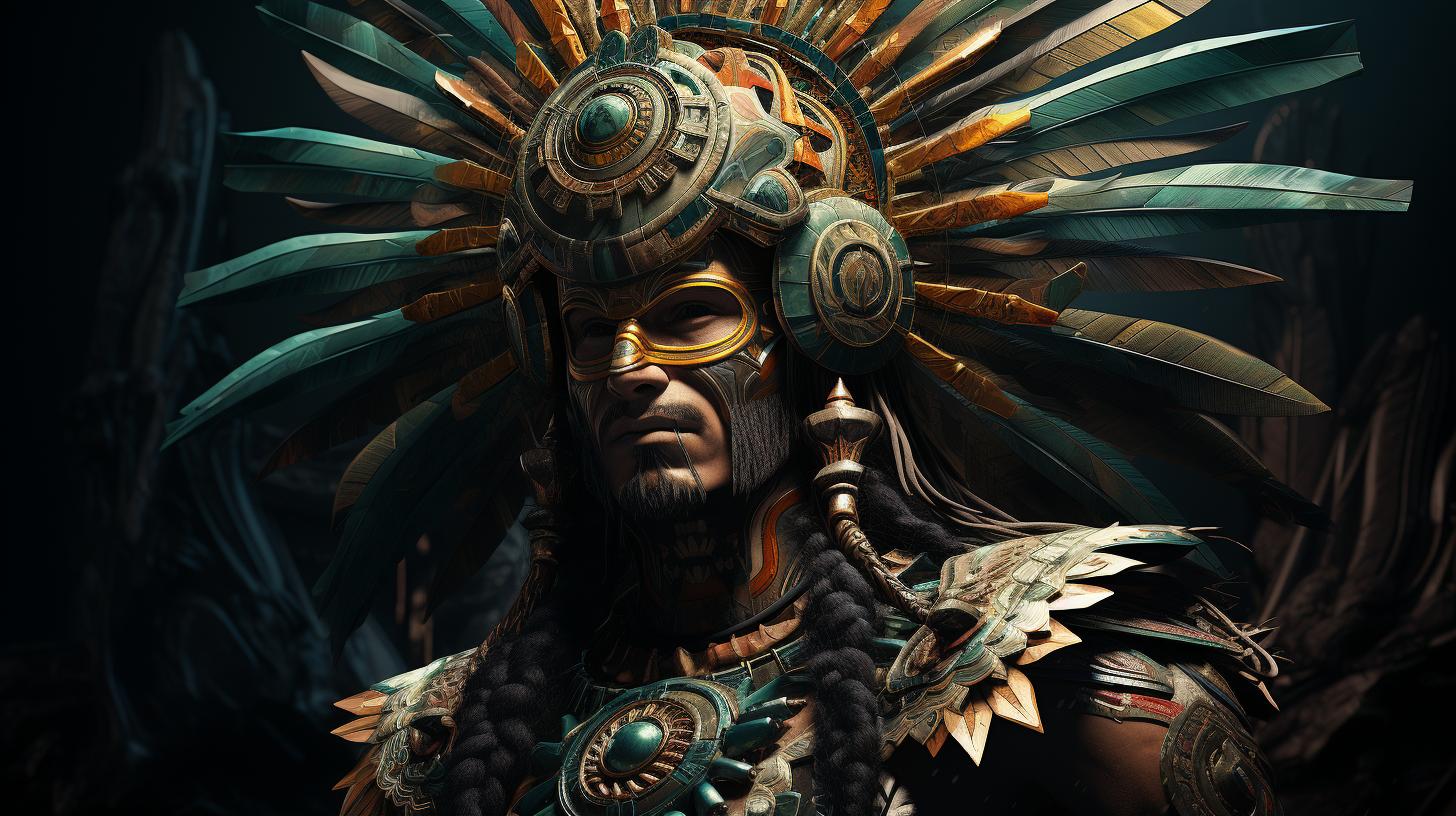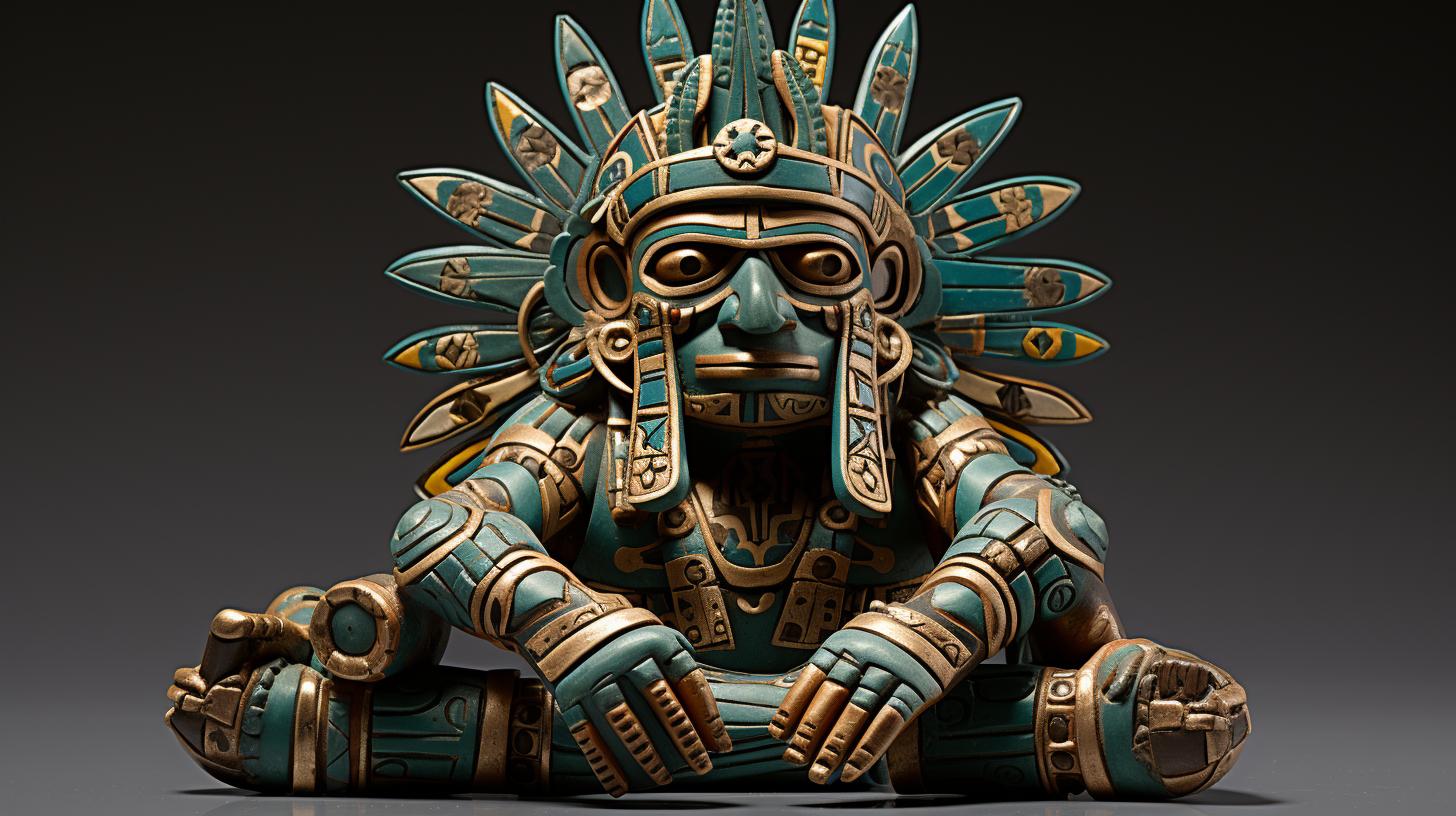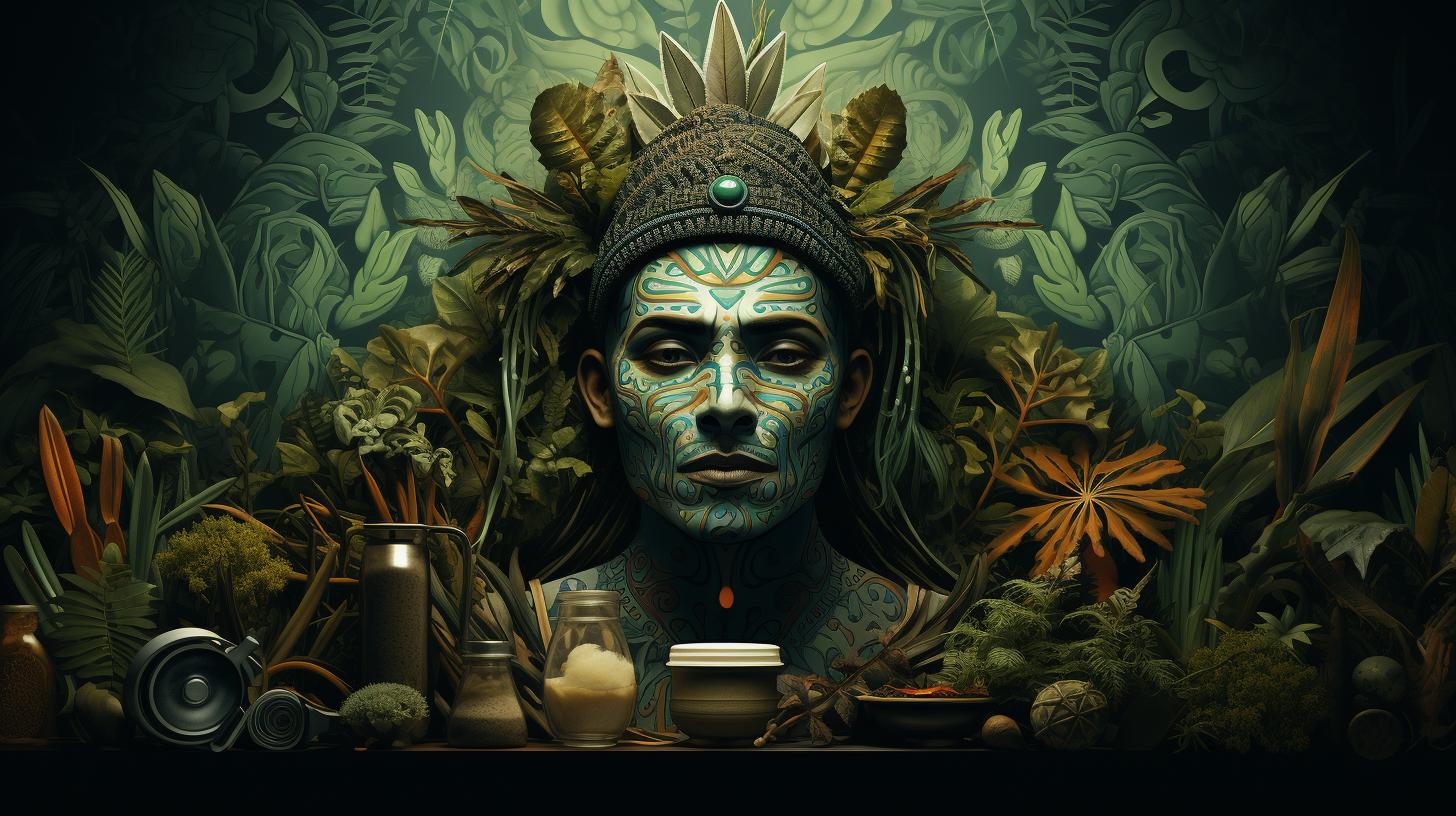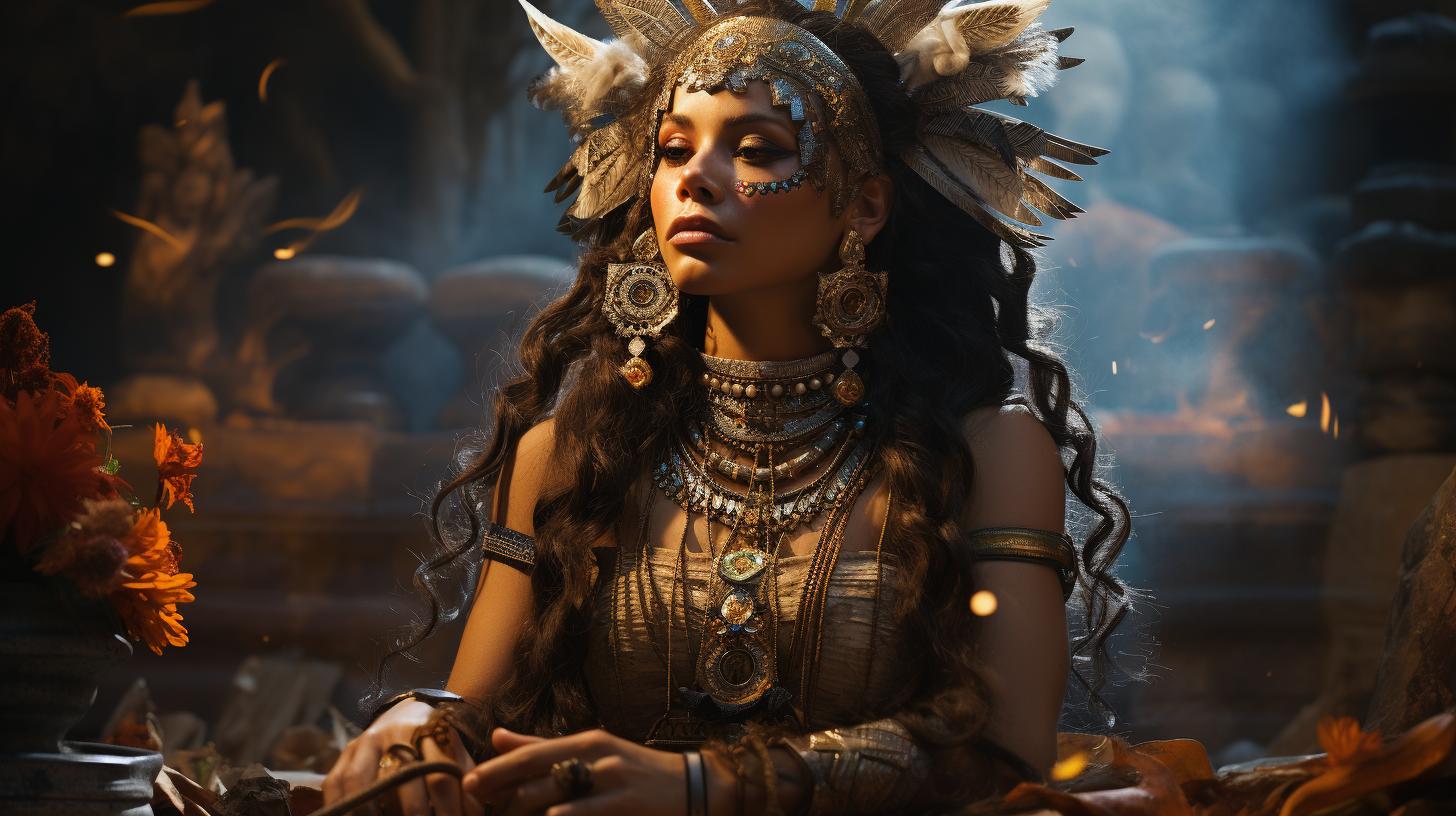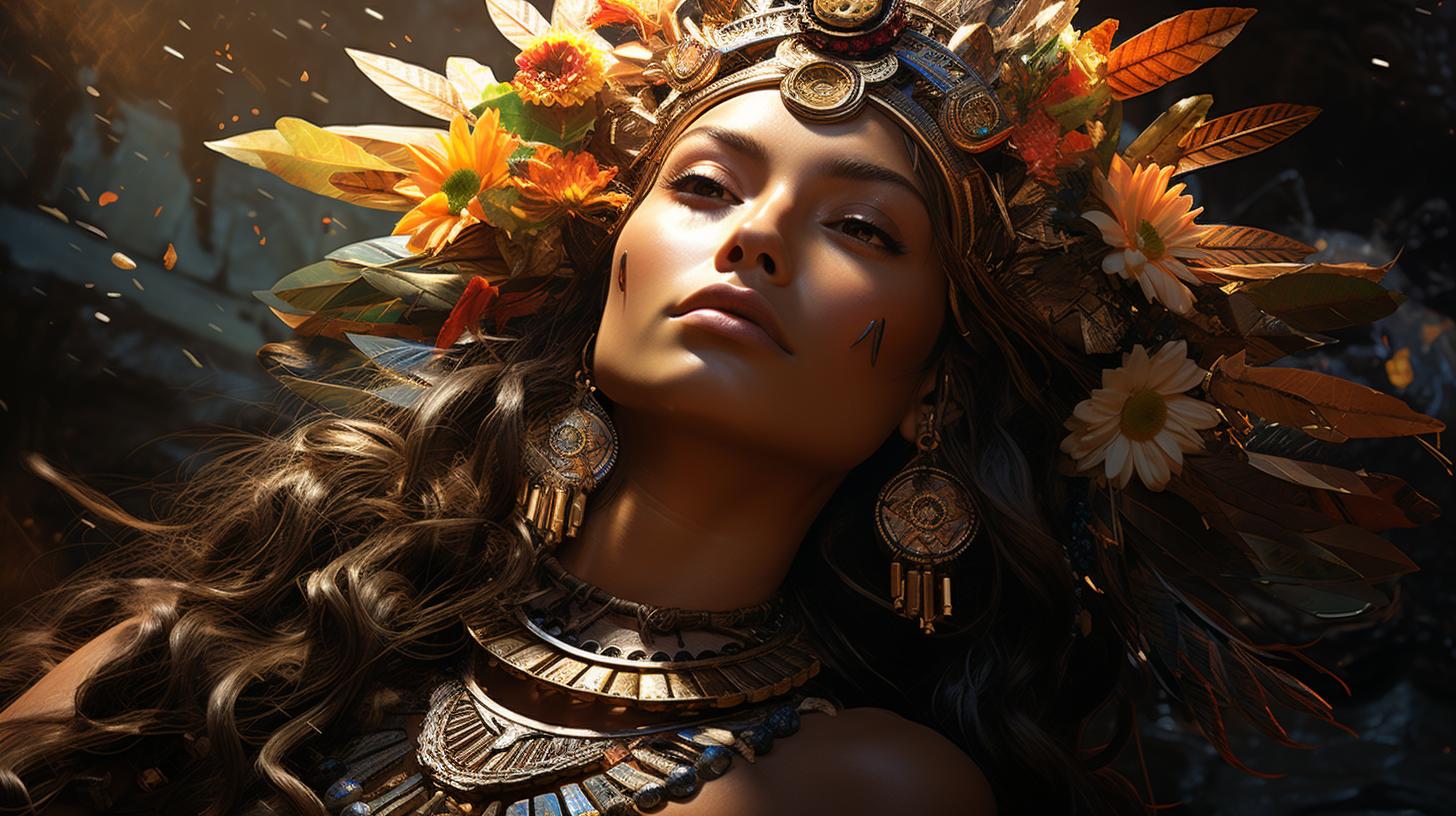Teoyaomqui: Exploring the Myth of the Aztec God of Death
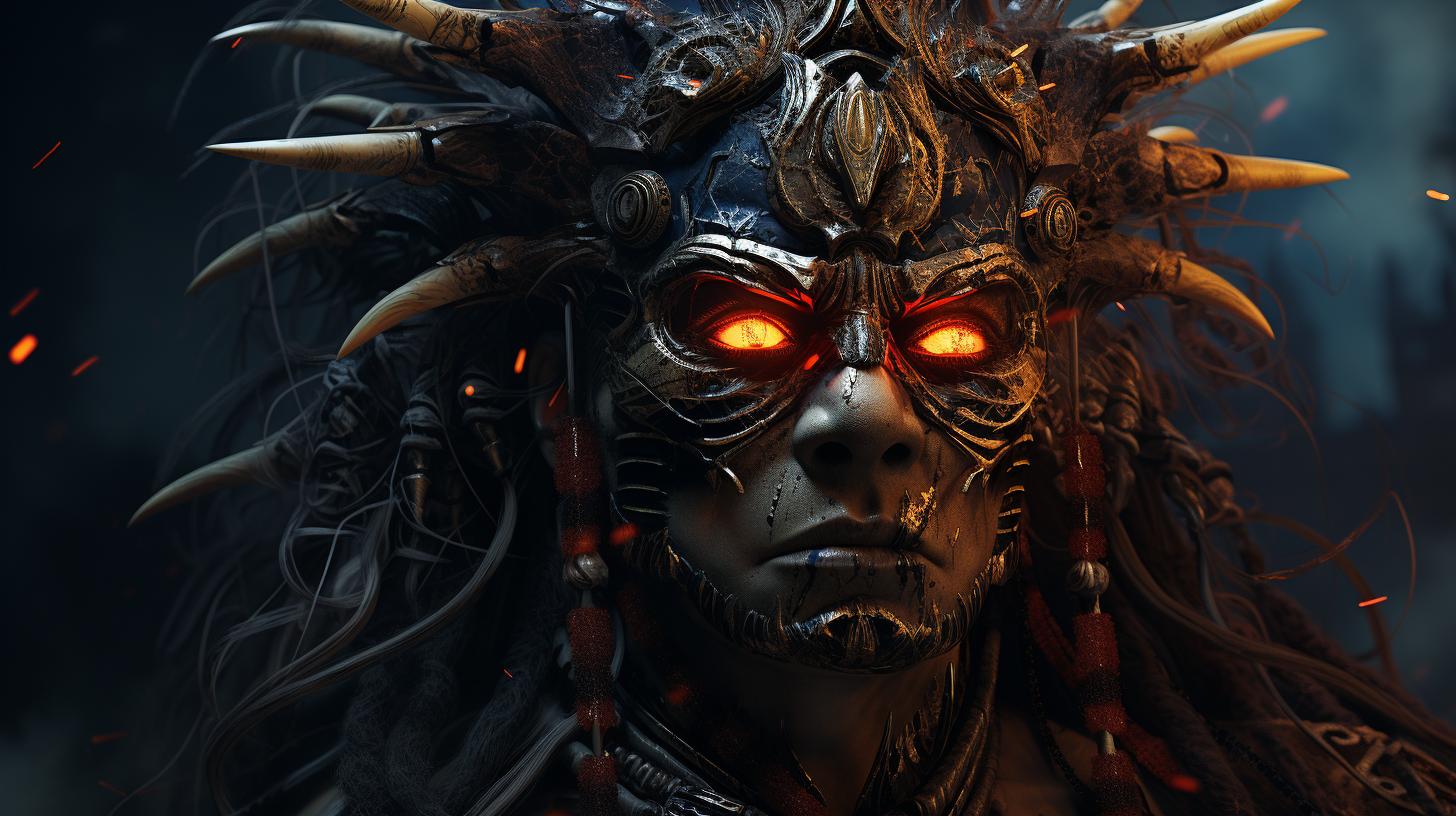
Teoyaomqui, the god of death in Aztec mythology, holds a central place in the rich and complex Aztec pantheon. Associated with the underworld and symbolizing the cycle of life and death, Teoyaomqui’s origins and role reflect the spiritual beliefs of ancient Aztec civilization.
This article provides an overview of Aztec mythology, explores Teoyaomqui’s significance, delves into the Aztec pantheon and creation myth, examines cross-cultural influences, and discusses Teoyaomqui’s legacy in modern culture. Journey through the fascinating realm of Teoyaomqui and the mythological world of the Aztecs.
Overview of Aztec Mythology
Aztec mythology is a rich tapestry of ancient beliefs and stories that formed the foundation of the Aztec civilization. It encompasses a vast array of gods, goddesses, creation myths, and cultural rituals that played a central role in the lives and worldview of the Aztec people.
The Aztecs believed in a pantheon of deities who governed various aspects of the universe and human existence. These gods and goddesses influenced every facet of their society, from agriculture and warfare to fertility and the natural elements.
At the heart of Aztec mythology was the concept of duality and balance. The Aztecs believed that the world was constantly in a delicate equilibrium, and it was their duty to maintain this balance through rituals and offerings to the gods.
Aztec mythology also revolved around ancient creation myths that explained the origins of the world and the cycles of life and death. These myths often involved epic battles between gods and celestial beings, symbolizing the cosmic forces at work.
One of the most significant figures in Aztec mythology is Teoyaomqui, the god of death. Teoyaomqui represents the cycle of life, reflecting the Aztec belief in the constant flow and transformation of energy.
Through studying and understanding Aztec mythology, we gain insight into the cultural values, spiritual beliefs, and cosmological worldview of one of the most fascinating civilizations in history.
Teoyaomqui: The God of Death in Aztec Mythology
Teoyaomqui, the prominent deity in Aztec mythology, is revered as the god of death.
This section delves into the origins and role of Teoyaomqui, highlighting the significant associations with death and the underworld. Additionally, the symbolism and iconography surrounding Teoyaomqui shed light on the intricate beliefs of the ancient Aztecs.
Origins and Role of Teoyaomqui
The origins of Teoyaomqui can be traced back to the complex pantheon of the Aztec gods. As the god of death, Teoyaomqui played a crucial role in the cycle of life and death.
According to Aztec mythology, he oversaw the passage of souls into the underworld, ensuring their safe journey and guarding over their spiritual transformation.
Teoyaomqui’s role expanded beyond mere death; he was also associated with rebirth and regeneration.
The Aztecs believed that death was not the end but a part of the eternal cycle of existence. Teoyaomqui’s presence symbolized the necessary transition from one phase of life to another, allowing for the continuous renewal of the cosmos.
Associations with Death and the Underworld
A central aspect of Teoyaomqui’s significance lies in his associations with death and the underworld. In Aztec beliefs, death was seen as a transformative process and a journey into Mictlan, the realm of the dead.
Teoyaomqui stood as the guardian and guide of souls as they crossed the threshold into this realm.
Teoyaomqui was often depicted with skeletal features, signifying his connection to death. The concept of death, in Aztec mythology, held deep spiritual meaning, representing the transition to a higher existence rather than an end in itself.
Teoyaomqui’s association with death embodied this profound understanding of mortality.
Symbolism and Iconography of Teoyaomqui
Teoyaomqui’s symbolism and iconography served as vital visual representations of his role and significance. Depictions of Teoyaomqui often showcased him adorned with skeletal motifs and wearing a headdress made of human skulls.
The skeletal adornments and skull headdress embodied the transformative nature of death and symbolized the cyclical aspect of life. By incorporating these elements, the Aztecs aimed to convey the eternal cycle of existence and rebirth, underlining Teoyaomqui’s role as a facilitator of cosmic rejuvenation.
The symbolism associated with Teoyaomqui’s iconography held immense religious and spiritual significance, encouraging the Aztecs to embrace the cyclicality of life and find solace in the transformative nature of death.
The Aztec Pantheon: Gods and Goddesses
The Aztec pantheon is a diverse assemblage of deities, each with their unique characteristics and dominion.
These gods and goddesses played fundamental roles in the lives and beliefs of the Aztecs, shaping their understanding of the world. Let’s explore some of the prominent figures in the Aztec pantheon:
Huitzilopochtli: God of War and the Sun
Huitzilopochtli held a paramount position in Aztec mythology as the god of war and the sun.
He guided the Aztecs during their migration to the Valley of Mexico, leading them to establish the magnificent city of Tenochtitlán. The Aztecs revered Huitzilopochtli, attributing their military successes to his divine intervention.
Tlaloc: God of Rain and Water
Tlaloc was the god of rain and water, symbolizing fertility and agricultural abundance. The Aztecs believed that Tlaloc controlled the water cycle, providing nourishment for their crops and ensuring prosperity.
Rituals and offerings were dedicated to Tlaloc to appease him and ensure a bountiful harvest.
Quetzalcoatl: God of Wind and Wisdom
Quetzalcoatl, known as the Feathered Serpent, was revered as the god of wind and wisdom. Associated with learning, arts, and civilization, Quetzalcoatl played a vital role in guiding humanity towards enlightenment and improvement.
He was also closely associated with creation and was a prominent figure in the Aztec creation myth.
Xolotl: God of Lightning and Fire
Xolotl was the god of lightning and fire, often depicted as a canine or monstrous figure. As the twin brother of Quetzalcoatl, Xolotl accompanied souls on their journey through the underworld.
He possessed the power to guide and protect the departed, ensuring their safe passage to the afterlife.
Chalchiuhtlicue: Goddess of Rivers and Lakes
Chalchiuhtlicue held a significant place in Aztec mythology as the goddess of rivers and lakes. She governed over bodies of water and was believed to bring fertility and sustenance to the land.
Her presence was vital for maintaining the delicate balance of nature and ensuring the prosperity of the Aztec people.
Coatlicue: Goddess of Fertility and Earth
Coatlicue, the mother of Huitzilopochtli, was the goddess of fertility and earth. She represented the life-giving force of nature and embodied both creation and destruction. As a fearsome deity, Coatlicue demanded respect and reverence from the Aztecs, who recognized her immense power.
The pantheon of Aztec gods and goddesses encompasses a vast array of deities, each playing a crucial role in the beliefs and rituals of the Aztec civilization. Their multifaceted characters and significance reflect the complex spiritual worldview of the ancient Aztecs.
Aztec Creation Myth: The Five Suns
The Aztec creation myth, known as the Five Suns, provides an intriguing insight into the cosmology of the ancient Aztecs. According to this myth, the world has gone through a series of cycles or ages, each of which was destroyed by a cataclysmic event.
In each age, a different sun ruled, and the fifth and current age is presided over by the sun god Tonatiuh.
Huitzilopochtli’s Battle and the Sacrificial Rituals
One crucial event in the Aztec creation myth is the battle between Huitzilopochtli and his sister Coyolxauhqui. Huitzilopochtli, the god of war and the sun, fought and defeated his siblings, representing the challenges that needed to be overcome for the new age to begin.
This mythical battle inspired the Aztecs to perform sacrificial rituals to honor Huitzilopochtli and ensure the continuation of the world.
Coyolxauhqui: The Sacrificial War
Coyolxauhqui, the sister of Huitzilopochtli, played a significant role in the Aztec creation myth. She led the other siblings in an attempt to kill their mother, Coatlicue, who had become pregnant with Huitzilopochtli. However, Huitzilopochtli emerged fully grown from Coatlicue’s womb and defeated Coyolxauhqui and his siblings.
This event further emphasized the importance of sacrifice in Aztec mythology and the belief in the constant struggle between life and death.
Significance of Sacrifices in Aztec Mythology
In Aztec mythology, sacrifice played a vital role in maintaining the balance between the human world and the divine realm. The Aztecs believed that offering human blood and hearts to the gods ensured the survival of humanity and the continuation of life.
Sacrifices were performed in temples dedicated to specific deities, such as Huitzilopochtli, where the hearts of the victims were ritually removed. This act of sacrifice was seen as a powerful way to honor the gods and maintain the cosmic order.
The Aztec creation myth and the concepts surrounding it, such as the battles of Huitzilopochtli and the significance of sacred rituals, give us a glimpse into the complex belief system and worldview of the ancient Aztecs.
These myths and rituals provided a framework through which the Aztecs sought to understand the cycles of life and death, the role of the gods, and their place in the cosmic order.
Influences and Connections in Aztec Mythology
Cross-cultural Influences in Aztec Mythology
The rich tapestry of Aztec mythology exhibits fascinating connections and influences from various cultures around the world. This interplay can be observed in artistic motifs, religious practices, and even deities shared with African, Australian Aboriginal, Buddhist, Chinese, Egyptian, Greek, Norse, Roman, and Yoruba mythologies.
These cross-cultural influences suggest a complex exchange of ideas and beliefs, shaping the diverse cosmology of the Aztecs.
Aztec Mythology and Mayan Connections
A close cultural and historical relationship existed between the Aztecs and the Mayans, characterized by shared mythological themes and deities. Both civilizations developed their own interpretations of gods such as Quetzalcoatl and Tlaloc, intertwining their beliefs and creating a unique blend of mythology.
The influence of Mayan cosmology and religious practices in Aztec mythology further highlights the cultural interconnectedness of the Mesoamerican region.
Astrological and Cosmological Beliefs in Aztec Mythology
Astrology and cosmology played a fundamental role in Aztec mythology, shaping their understanding of the universe and humanity’s place within it. The Aztecs believed that celestial bodies and natural phenomena held deep significance and impacted human lives.
Through complex observations and rituals, they sought to interpret and harness the power of the stars, planets, and celestial events. These beliefs formed the foundation of their astrological and cosmological practices.
The Legacy of Teoyaomqui in Modern Culture
The ancient deity Teoyaomqui continues to leave an indelible mark on modern culture, with his presence being felt in various forms of art, literature, cinema, and even in contemporary religious practices.
Here are some notable aspects of Teoyaomqui’s legacy:
Teoyaomqui in Art, Literature, and Cinema
Artists, writers, and filmmakers have been captivated by the mysterious allure of Teoyaomqui, often depicting his iconic imagery in their works. Paintings, sculptures, and murals portraying Teoyaomqui’s skeletal figure and his associations with death and the underworld have become iconic symbols in contemporary art.
Moreover, Teoyaomqui’s mythological significance has found its way into numerous literary works, with authors drawing inspiration from his tales of battle, sacrifice, and his role as a deity of the afterlife.
His character is often portrayed as a symbol of transformation, guiding protagonists through their journeys of self-discovery and rebirth.
Cinema has also embraced Teoyaomqui’s enticing mythology, exploring his realm of death and the underworld in various films.
These cinematic interpretations often delve into the duality of life and death, exploring the complexities of human existence and the innate fear and fascination associated with mortality.
Modern Interpretations and Adaptations of Aztec Mythology
In addition to Teoyaomqui’s individual presence, modern interpretations of Aztec mythology have seen a revival, capturing the interest of enthusiasts, scholars, and spiritual seekers alike.
Contemporary authors and researchers delve into ancient Aztec texts and artifacts to bring forth new perspectives on Teoyaomqui and the broad pantheon of Aztec gods and goddesses.
Furthermore, adaptations of Aztec mythology have found their way into popular culture through various media, including video games, graphic novels, and role-playing games.
These adaptations provide audiences with interactive experiences, allowing them to immerse themselves in the mystical world of Teoyaomqui and other Aztec deities.
Teoyaomqui Worship and Rituals Today
Despite the passage of centuries, Teoyaomqui’s worship and rituals continue to be observed by certain communities and indigenous groups that have preserved Aztec traditions. These practices often involve ceremonies honoring the god of death, paying homage to the cyclical nature of life and the spiritual connection to the underworld.
Additionally, Teoyaomqui’s role persists in spiritual and metaphysical beliefs held by individuals interested in Aztec mythology and indigenous spirituality. His intricate symbolism and association with death serve as potent metaphors for personal growth, inner transformation, and the exploration of the mysteries of existence.
Teoyaomqui’s profound legacy in modern culture speaks to the enduring power and fascination of ancient mythologies, reminding us of the intricate tapestry of human beliefs and the profound impact they have on our understanding of the world.
.











